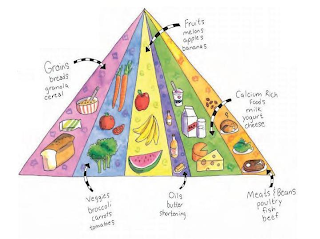The Food and Waterborne Diseases Unit (FWBD) is responsible in prevention and control activities for food and waterborne diseases in Malaysia. One of the main activities is surveillance of food and waterborne diseases namely cholera, typhoid and paratyphoid fevers, viral hepatitis A, food poisoning and dysentery through the mandatory notifiable diseases surveillance system. Through this system, surveillance data is collected through physician-based surveillance and outbreak investigations as there is mandatory requirement for notification of communicable diseases by the Prevention and Control of Infectious Disease Act 1988 (PCID 1988). Notification is received from government health facilities consisting of health centers, outpatient departments and hospitals and also from the private hospitals and general medical practitioners.
The surveillance system has been improved recently through the introduction of the Communicable Diseases Information System (CDCIS), an electronic version of reporting, directly linking between hospital record offices' to the district, state and national communicable diseases surveillance system.
As a referral center for food and waterborne disease, the FWBD Control Unit is responsible in providing a guideline and technical support to the State Health Department and District Health Office in any activity related to FWBD including management of FWBD crisis or outbreak, development of plan of action, research, training and health promotion. This unit also responsible to communicate with other units or departments within or outside MOH to coordinate activities with regard to control and prevention of food and water borne diseases, if the need arises. Communication has also been tied with international agencies such as the World Health Organization (WHO) and the Centre of Disease Control (CDC) USA.
Some foodborne diseases are well recognized, but are considered emerging because they have recently become more common. For example, outbreaks of salmonellosis have been reported for decades, but within the past 25 years the disease has increased in incidence on many continents. In the Western hemisphere and in Europe, Salmonella serotype Enteritidis (SE) has become the predominant strain. Investigations of SE outbreaks indicate that its emergence is largely related to consumption of poultry or eggs.
While cholera has devastated much of Asia and Africa for years, its introduction for the first time in almost a century on the South American continent in 1991 makes it another example of an infectious disease that is both well-recognized and emerging. While cholera is often waterborne, many foods also transmit infection. In Latin America, ice and raw or underprocessed seafood are important epidemiological pathways for cholera transmission.
Other foodborne pathogens are considered emerging because they are new microorganisms or because the role of food in their transmission has been recognized only recently. Infection with Escherichia coli serotype O157:H7 (E. coli) was first described in 1982. Subsequently, it has emerged rapidly as a major cause of bloody diarrhoea and acute renal failure. The infection is sometimes fatal, particularly in children. Outbreaks of infection, generally associated with beef, have been reported in Australia, Canada, Japan, United States, in various European countries, and in southern Africa. Outbreaks have also implicated alfalfa sprouts, unpasteurized fruit juice, lettuce, game meat and cheese curd.
In 1996, an outbreak of Escherichia coli O157:H7 in Japan affected over 6,300 school children and resulted in 2 deaths. This is the largest outbreak ever recorded for this pathogen.
Listeria monocytogenes (Lm) is considered emerging because the role of food in its transmission has only recently been recognized. In pregnant women, infections with Lm can cause abortion and stillbirth, and in infants and persons with a weakened immune system it may lead to septicemia (blood poisoning) and meningitis. The disease is most often associated with consumption of foods such as soft cheese and processed meat products that are kept refrigerated for a long time because Lm can grow at low temperatures. Outbreaks of listeriosis have been reported from many countries, including Australia, Switzerland, France and the United States. Two recent outbreaks of Listeria monocytogenes in France in 2000 and in the USA in 1999 were caused by contaminated pork tongue and hot dogs respectively.
Foodborne trenmatodes are also emerging as a serious public health problem, especially in south-ease Asia but also in Latin America, in part due to a combination on increased aquaculture production, often under unsanitary conditiond, and of consumption of raw and lightly processed fresh water fish and fishery products. Foodborne trematodes can cause acute liver disease, and may lead to liver cancer. An estimated 40 million people world wide are affected.
Bovine Spongiform Encephalopathy (BSE), a fatal transmissible, neurodegenerative disease of cattle, was first discovered in the United Kingdom in 1985. The cause of the disease was traced to an agent related to scrapie in sheep, which contaminated recycle bovine carcasses used to make meat and bone meal additives for cattle feed. Recycling of the BSE agent led to a distributed common source epidemic of more than 180,000 diseased animals in the UK alone. The agent affects the brain and spinal cord of cattle and lesions are chracterized by sponge-like changes visible in a microscope. At this time, 19 countries have reported endemic BSE cases and the disease is no longer confined to the Europian Community; a case of BSE has been reported in the cattle herd of Japan.
In human populations, exposure to the BSE agent (probably in contaminated bovine-based food products) has been strongly linked to the appearance in 1996 of a new transmissible spongiform encephalopathy of humans called variant Creutzfeldt-Jakob Disease (vCJD). As of January 2002, 119 people have developed vCJD, most are from the UK but five cases have been reported from France.
Why do foodborne diseases emerge?
New foodborne disease threats occur for a number of reasons. These include increase in international travel and trade, microbial adaption and changes in the food production system, as well as human demographics and behaviour.

